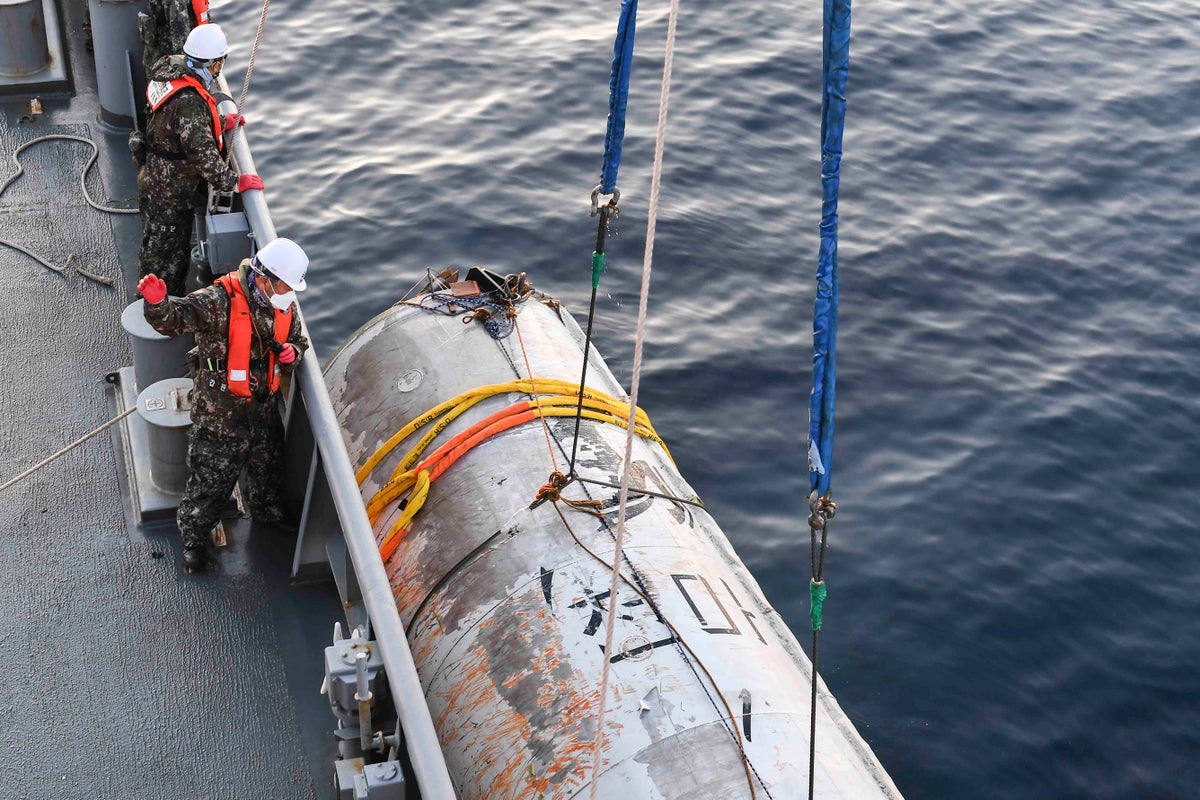
The United States deployed a nuclear-powered submarine capable of carrying about 150 Tomahawk missiles to South Korea on Friday, a day after North Korea resumed missile tests in protest of the U.S.-South Korean live-fire drills.
The USS Michigan’s arrival in South Korea, the first of its kind in six years, is part of a recent bilateral agreements on enhancing “regular visibility” of U.S. strategic assets to the Korean Peninsula in response to North Korea's advancing nuclear program, according to South Korean officials.
With the deployment of the USS Michigan, the U.S. and South Korean navies are to conduct drills on boosting their special operation capabilities and joint ability to cope with growing North Korean nuclear threats, the South Korean Defense Ministry said in a statement.
It said the U.S. submarine arrived at the southeastern port city of Busan but didn’t say how long it would stay in South Korean waters.
The USS Michigan is one of the biggest submarines in the world. The Ohio-class guided-missile submarine can be armed with 150 Tomahawk missiles with a range of about 2,500 kilometers (1,550 miles) and is capable of launching special forces missions, according to the South Korean statement.
The South Korean and U.S. militaries have been expanding their exercises in reaction to North Korea’s provocative run of missile tests since last year. North Korea has argued it was forced to ramp up testing activities to deal with its rivals’ expanded military drills that it views as an invasion rehearsal, but experts say the North ultimately aims to modernize its arsenal and increase its leverage in eventual diplomacy.
In April, after their meeting in Washington, President Joe Biden and South Korean President Yoon Suk Yeol agreed that United States will further enhance the “regular visibility of strategic assets to the Korean Peninsula.” Biden also stated that any North Korean nuclear attack on the U.S. or its allies would “result in the end of whatever regime” took such action.
The two leaders also announced other steps to reinforce joint deterrence capabilities such as the docking a U.S. nuclear ballistic missile submarine in South Korea periodically; bolstering joint training exercises; and the establishment of a new nuclear consultative group. The nuclear ballistic missile submarine hasn't come to South Korea.
Kim Yo Jong, the powerful sister of North Korean leader Kim Jong Un, slammed the Biden-Yoon summit agreements, saying they revealed the two countries’ “most hostile and aggressive will of action” against the North. She threatened to further bolster her country’s nuclear forces.
On Thursday, North Korea fired two short-range ballistic missiles toward its eastern waters, shortly after it vowed responses to the just-ended South Korea-U.S. firing drills near the Koreas’ heavily armed border.
They were the North’s first weapons launches since it tried to put its first spy satellite into orbit in late May. The launch failed as the rocket carrying the spy satellite crashed into the waters off the Korean Peninsula’s west coast.
South Korea’s Defense Ministry said Friday that military search crews have salvaged what it believes is part of the crashed North Korean rocket. The ministry released photos of the white, metal cylinder, which some experts said would have been the rocket’s fuel tank.







